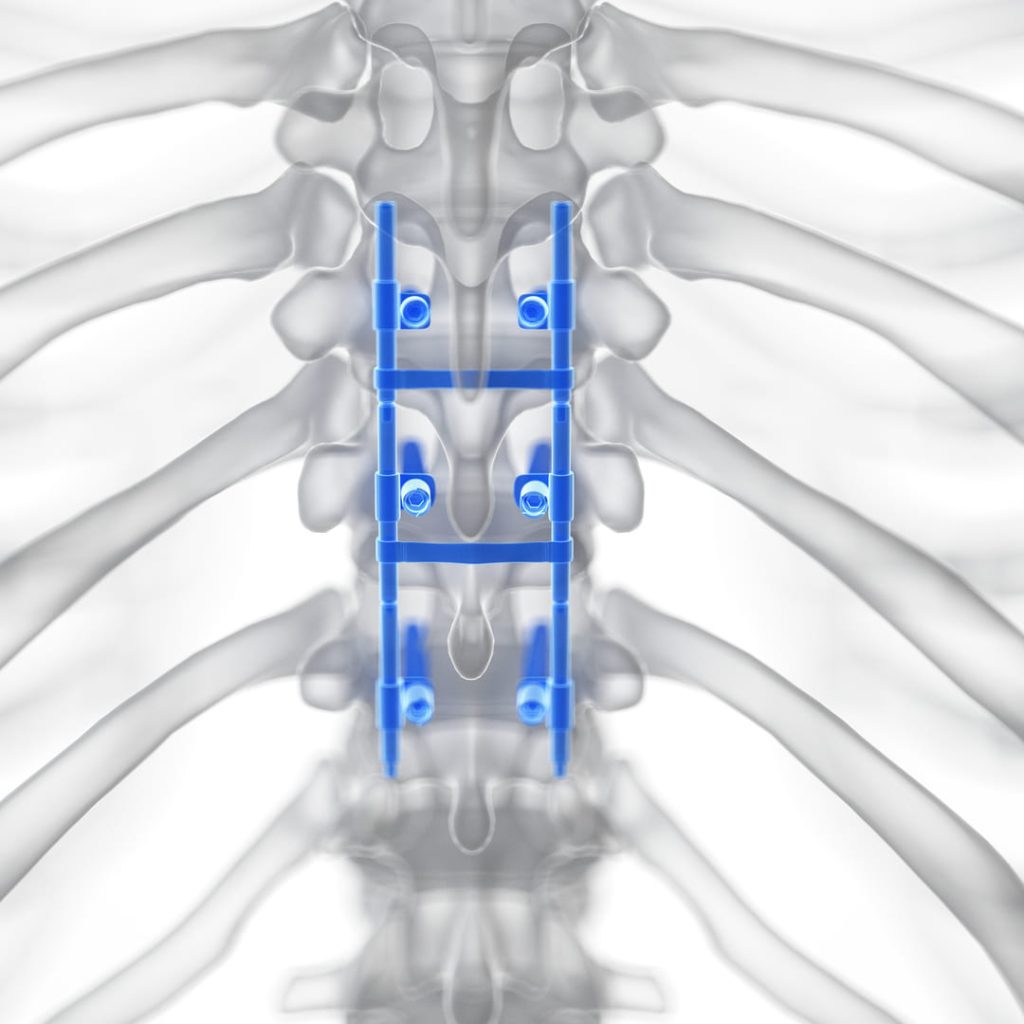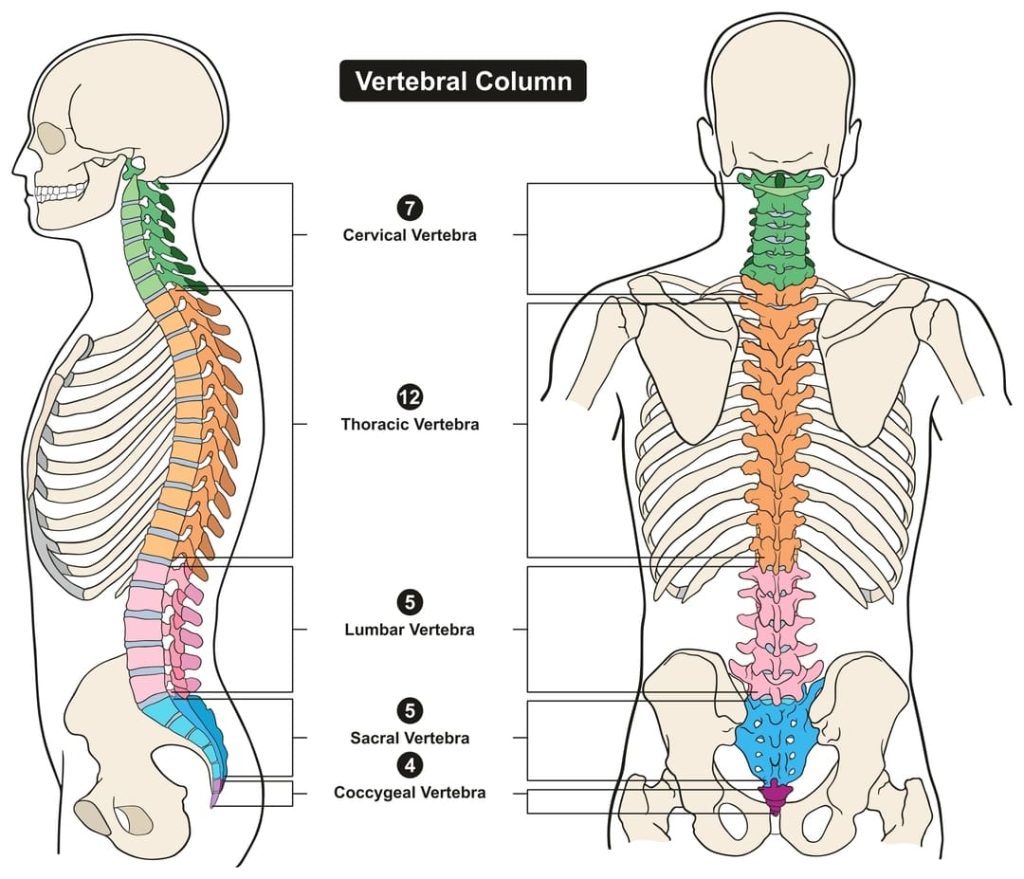If you’ve had a spinal fusion, you may wonder if you’re eligible for disability benefits from the Department of Veterans Affairs (VA). The good news is that veterans with spinal fusions may qualify for a VA disability rating for spinal fusion.
In this article, we’ll explain how the VA rates spinal fusion surgery for disability benefits and what you need to do to apply.

You DESERVE a HIGHER VA rating.
WE CAN HELP.
Take advantage of a FREE VA Claim Discovery Call with an experienced Team Member. Learn what you’ve been missing so you can FINALLY get the disability rating and compensation you’ve earned for your service.
What Is a Spinal Fusion?
Spinal fusion is a surgical procedure that involves joining two or more vertebrae together. The goal of the surgery is to stabilize the spine and relieve pain. It’s usually performed when other treatment options, like medication and physical therapy, have failed to provide relief.
Spinal fusion surgery can treat a range of disabilities including:
- Deformities of the spine. Spinal fusion helps correct spinal deformities like a sideways curvature of the spine (scoliosis).
- Spinal weakness or instability. Your spine may become unstable if there’s abnormal (or excessive) motion between two vertebrae. This is a common side effect of severe arthritis in the spine. Spinal fusion can be used to restore spinal stability.
- Herniated disk. Spinal fusion may help stabilize the spine after the removal of a damaged (herniated) disk.
Spinal fusion surgery can be performed on any part of the spine, but it’s most commonly done on the lower back. The surgery begins with the surgeon making an incision in the patient’s back. They will then remove any damaged or diseased tissue between the vertebrae. Once that’s done, the surgeon will place bone grafts or metal rods and screws between the vertebrae to hold them together while they heal.
In selected cases, some surgeons use a synthetic substance instead of bone grafts. These synthetic substances help promote bone growth and speed the fusion of the vertebrae.
It may take four to six weeks to get back to doing simple activities of daily living. It may take six months to a year to fully recover from the surgery. Patients will likely need to take it easy and avoid strenuous activity during that time. They may also need to wear a back brace.

The Relationship Between Spinal Fusion and Veterans
It’s no secret that many veterans suffer back pain from spinal injuries. A number of them require surgery to correct the problem. One type of surgery that is becoming increasingly common is spinal fusion. The goal of spinal fusion surgery is to relieve the pain that these veterans are experiencing. By joining the vertebrae, the surgeon can stabilize the spine and take pressure off the nerves. It can provide significant relief for the patient.
Impact on VA Disability Benefits Claim
If you’re applying for VA disability benefits and you’ve had spinal fusion surgery, you should definitely include that information in your claim. In general, the more supporting evidence you can provide, the better.
When reviewing claims for spinal fusions, the VA will look at things like X-rays, MRIs, medical records, and independent medical opinions from treating physicians. Range of motion and functional limitations will be evaluated. They’ll also look at whether or not you’re still experiencing pain despite having undergone surgery. If you’re still experiencing pain, that could warrant a higher disability rating.
How Spinal Fusion Can Increase Your VA Disability Benefits
You might wonder whether or not a veteran can get increased disability benefits from the VA due to spinal fusion surgery. It depends on several factors, including the specifics of your surgery, your post-operative course, and whether you have any other disabling conditions that contribute to your overall disability rating.
Conditions That Qualify for VA Disability Benefits
Several disabling back conditions can qualify a veteran for VA disability benefits. These include degenerative disc disease, spondylolisthesis, spinal stenosis, and herniated discs, among others. If you’ve been diagnosed with any of these conditions and your doctor has recommended spinal fusion surgery, you may be eligible for a VA disability rating.
However, it’s important to remember that the VA will not automatically award a rating just because you’ve had spinal fusion surgery. They’ll need to see evidence that the spinal fusion is caused by your back condition and is related to your service.
In some cases, the VA may actually decrease a veteran’s disability rating after spinal fusion surgery if they feel that the veteran’s overall condition has improved as a result of the surgery.

Qualifying for a Spinal Fusion VA Disability Rating
If you’re seeking a VA disability rating for spinal fusion as a result of spinal fusion surgery, you will need to provide certain pieces of evidence to support your claim.
- First, You will need a current diagnosis for a spinal condition that necessitates spinal fusion as treatment. Medical records could also be included such as X-rays or MRIs.
- Second, you’ll need evidence that the spinal fusion is caused by your back condition that is related to your service. You will also need a copy of your operative report from the surgeon who performed your spinal fusion surgery. This report should detail what kind of procedure was performed, what level(s) of the spine was involved, and any complications that occurred during or after the surgery.
- Finally, you will need an independent medical opinion from your surgeon attesting that your current condition is directly related to the original injury or condition that led to your need for spinal fusion surgery.
How the VA Determines Disability Rating for Spinal Fusion Surgery
If you’re a veteran who has undergone spinal fusion surgery, you may wonder how the VA will determine your disability rating. The good news is that the VA has a very specific process for evaluating Veterans who have had this type of surgery.
First, you need to know that the VA will not automatically give you a 100% disability rating just because you’ve had spinal fusion surgery. To receive a 100% rating, you’ll need to prove that your condition is completely disabling and that you cannot work or earn a living in any capacity.
The VA will evaluate your condition based on several factors, including the severity of your symptoms, the extent of your disability, and your ability to perform daily activities. They will also consider your age, education, and employment history.
If you cannot work or earn a living due to your condition, you may be eligible for a 100% disability rating. However, if you can work or perform some daily activities, the VA will assign a disability rating based on how severely your condition impacts your ability to function, according to the rating criteria.
To receive the highest possible disability rating, you must provide the proper evidence to support your claim. It can include your diagnosis, independent medical opinion, medical records, and written statements from friends or family members. The more educated and prepared you are with your claim and getting the right evidence to submit a fully developed claim, the better your chances of getting the benefits you deserve.
VA Rating for Spinal Fusion
When determining your rating, the VA will consider your entire medical history, not just your spinal fusion surgery. They will review your records to see if you have any other impairments contributing to your overall condition. For example, if you also have arthritis, the VA might factor that into your rating. Once they have your records, a doctor will examine you and ask about your symptoms. They will also test your range of motion at different angles to get an accurate picture of your condition.
If you believe you deserve a higher rating than the VA has given you, you have the right to appeal their decision. You can do this by filing a Higher Level Review or a Supplemental appeal.

Spinal Fusion Disability Ratings
10% Disability Rating
A 10% disability rating for spinal fusion is granted when forward flexion of the thoracolumbar spine is greater than 60 degrees but not greater than 85 degrees; or, forward flexion of the cervical spine greater than 30 degrees but not greater than 40 degrees; or, combined range of motion of the thoracolumbar spine greater than 120 degrees but not greater than 235 degrees; or, combined range of motion of the cervical spine greater than 170 degrees but not greater than 335 degrees; or, muscle spasm, guarding, or localized tenderness not resulting in abnormal gait or abnormal spinal contour; or, vertebral body fracture with loss of 50 percent or more of the height.
20% Disability Rating
Receiving a 20% disability rating for spinal fusion means that your range of motion is significantly reduced. Lower to mid-back flexion is limited to between 30° and 60°, and the range in your neck is 15°-30°. Additionally, thoracolumbar combined movement should be less than 120°, and cervical combined movement should measure less than 170°. Additionally, this disability classification requires evidence of muscle spasms or guarding severe enough to cause impaired gait or an abnormal contour of the spine.
30% Disability Rating
Forward flexion of the cervical spine 15 degrees or less; or, favorable ankylosis of the entire cervical spine.
40% Disability Rating
Unfavorable ankylosis of the entire cervical spine; or, forward flexion of the thoracolumbar spine 30 degrees or less; or, favorable ankylosis of the entire thoracolumbar spine.
50% Disability Rating
Unfavorable ankylosis of the entire thoracolumbar spine.
100% Disability Rating
Unfavorable ankylosis of the entire spine due.
Service Connection For Spinal Fusion
If you are a veteran with a spinal fusion, you may wonder if you can get a service connection for your disability. The answer is that it depends. Service connection is a way for the VA to determine if a veteran’s disability is related to their military service.
To establish service connection for spinal fusion, the VA requires the following three elements:
- A current diagnosis of a back condition that necessitates a spinal fusion
- An in-service event, injury, or illness
- A medical nexus (i.e. link) between the current, diagnosed back condition and the in-service event, injury, or illness
Service connection can be granted for a disability resulting from an injury during service, an incident during service that aggravated an existing condition, or exposure to a known hazard during service. Once the VA granted a service connection, a percentage rating will be assigned.
Getting Help With Your VA Claim
At VA Claims Insider, we’re here to walk you through everything you need to know, including how to file your VA claims. We hope this guide has been helpful. Remember, if you have any questions, we encourage you to contact us for support.

NEED MORE ASSISTANCE?
Most veterans are underrated for their disabilities and, therefore, not getting their due compensation. At VA Claims Insider, we help you understand and take control of the claims process, so you can get the rating and compensation you’re owed by law.
Our process takes the guesswork out of filing a VA disability claim and supports you every step of the way in building a fully-developed claim (FDC)—so you can increase your rating FAST! If you’ve filed your VA disability claim and have been denied or have received a low rating—or you’re unsure how to get started—reach out to us! Take advantage of a FREE VA Claim Discovery Call. Learn what you’ve been missing—so you can FINALLY get the disability rating and compensation YOU DESERVE!

Brian Reese
Brian Reese is one of the top VA disability benefits experts in the world and bestselling author of You Deserve It: The Definitive Guide to Getting the Veteran Benefits You’ve Earned (Second Edition).
Brian’s frustration with the VA claim process led him to create VA Claims Insider, which provides disabled veterans with tips, strategies, and lessons learned to win their VA disability compensation claim, faster, even if they’ve already filed, been denied, gave up, or don’t know where to start.
As the founder of VA Claims Insider and CEO of Military Disability Made Easy, he has helped serve more than 10 million military members and veterans since 2013 through free online educational resources.
He is a former active duty Air Force officer with extensive experience leading hundreds of individuals and multi-functional teams in challenging international environments, including a combat tour to Afghanistan in 2011 supporting Operation ENDURING FREEDOM.
Brian is a Distinguished Graduate of Management from the United States Air Force Academy, Colorado Springs, CO, and he holds an MBA from Oklahoma State University’s Spears School of Business, Stillwater, OK, where he was a National Honor Scholar (Top 1% of Graduate School class).



